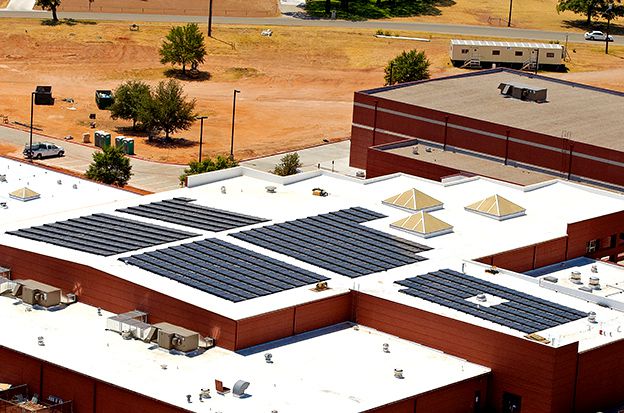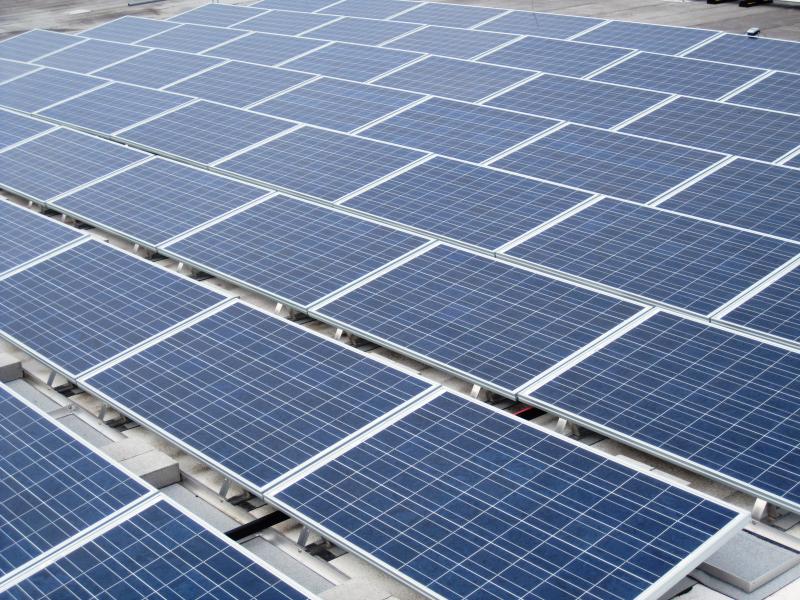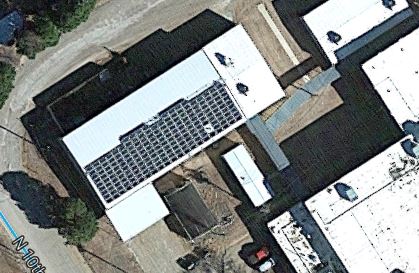Due to abundance of solar radiance and land availability, Texas is poised to lead the country in solar. Already, Texas is well on its way. To read more about the case for solar in Texas, click here. Schools throughout the state are installing solar on their buildings. Some compelling reasons for expanding solar at schools are listed below. Want your school to go solar? Use SEIA’s Act Now resources to email your administrator and review the practical guide outlining first steps for going solar.
Financial Stability
The rapid decline in solar system prices over the last several years has made installing solar systems on schools not only financially feasible, but beneficial. Going solar allows the school district to save money on electricity bills and allow districts to retain existing staff and resources in the face of budget cuts. Bridgeport Independent School District (ISD) in Bridgeport, TX opted to invest in solar energy in the face of budget cuts because of the certainty of money savings for the district. In Texas, the State Energy Conservation Office (SECO) offers free preliminary energy assessments to schools recommending cost effective resource efficiency measures and recommendations on where an installation could be installed. More information on this resource and financing guidance is found here.

Educational Opportunities
Solar provides schools with the means of expanding educational opportunities for science, technology, engineering and math topics by integrating solar energy and energy generation into the school curriculum. Solar installations on schools can be designed with education in mind to help students experience real-world situations and work collaboratively to develop solutions to the problems. A driving force for school districts in Texas to go solar was the benefit of providing hands-on learning opportunities to students. In many cases, school districts that have high percentages of low-income students, who otherwise would not have exposure to this technology, were given the opportunity to build up their math and science skills through interactions with the solar installations. Pasadena ISD in Pasadena, TX serves at least 75% low-income students who have the opportunity to interact with the 145 kilowatts (kW) of solar energy production in the district, learning creative problem solving skills and expanding future career pathways.

Environmental Protection
Beyond the economic and educational benefits of solar, the energy generated conserves natural resources and significantly reduces emissions of pollutants that threaten human health and the environment. Many schools utilize monitoring systems for student interaction that estimates the amount of pollution that the solar installation offsets from conventional power plants so students can see their school’s immediate impact on the environment. Munday Consolidated Independent School District (CISD) in Munday, TX hopes that the installation of a 47 kW array at the secondary school will engage the students on the importance of protecting the environment.

